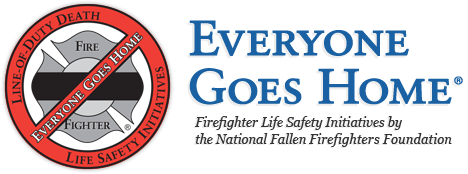In 2006, the National Fire Service Seatbelt Pledge was created, after the tragic death of Firefighter Brian Hunton who died after falling from his fire truck on the way to a call. Dr. Burton Clark, a distinguished member of the fire service and training specialist at the National Fire Academy, was compelled to challenge firefighters to improve their personal safety by wearing their seatbelts. With website and administrative support from TrainingDivision.com and Firehouse.com, the National Fire Service Seatbelt Pledge was introduced to the American Fire Service.
In addition to the support of the National Fire Academy, fire service partners including: the National Fallen Firefighters Foundation, the International Fire Chiefs Association (IAFC), National Volunteer Fire Council (NVFC), National Fire Protection Association (NFPA), and the National Institute for Occupational Safety and Health (NIOSH) have also joined the effort to eliminate firefighter injuries and line-of-duty deaths that can be prevented by seatbelt use.
Five years later, over 850 departments and 150,000 firefighters have signed the National Fire Service Seatbelt Pledge and committed to wearing their seatbelts. The reach of the Seatbelt Pledge has also spread beyond the borders of the United States. Firefighters in Australia, Canada, the United Kingdom, and U.S. Military Bases around the world have recognized the importance of wearing their seatbelts and joined the effort to ensure Everyone Goes Home®.
“Motor vehicle crashes are the second-leading cause of firefighter fatalities in the United States and this effort aims to reduce the number of preventable fatalities,” said Chief Ronald J. Siarnicki, Executive Director of the National Fallen Firefighters Foundation. “Just as you need to get to the scene of a call quickly, you need to get there safely; buckling your seatbelt is the easiest safety measure you can take.”
Starting in 2011, the National Fallen Firefighters Foundation (NFFF), through its Everyone Goes Home® progam, will lead the nationwide efforts and provide additional resources and support for the program. Use of seatbelts in department apparatus and personal vehicles is included in 16 Firefighter Life Safety Initiatives, a comprehensive list of steps established in 2004 to reduce the firefighter line-of-duty injuries and deaths. The program, relaunched as the International First Responder Seatbelt Pledge program, will make it even easier for first responders and departments to participate.



